Department of Natural Resources Development and Agricultural Engineering

Department Head: Ioannis Argyrokastritis, Professor
Tel. +30 210 529-4065, e-mail: jarg@aua.gr
Department Deputy Head: Thomas Bartzanas, Associate Professor
Tel. +30 210 529-4045, e-mail: t.bartzanas@aua.gr
The Department of Natural Resources Development and Agricultural Engineering belongs to the School of Environment and Agricultural Engineering. The objective of the undergraduate studies programme of the NRD&AE is “the integrated education and training of scientists as well as the promotion of research on areas related to appropriate use, integrated management of natural resources and the environment in general, as well as the development of research and technology in the fields of Agricultural Engineering and Land Reclamation”. The Department grants a Degree of Agronomist (Integrated Master-tier 7 of the national and European Qualifications Framework) specializing in Natural Resources Development and Agricultural Engineering. The Department of Natural Resources Development and Agricultural Engineering consists of four divisions:
General Description and Objectives
Our program, offers an applied curriculum providing many career opportunities in one of the most stable industries in the world, namely Agriculture. We believe our students will fill some of the most critically needed positions over the next decates in an effort to provide appropriate water use in agriculture particularly for irrigation and drainage, appropriate use of soils including remediation and protection, natural resources utilization, risk management of natural and human induced environmental hazards, and appropriate use of machine systems and infrastructure in agriculture.
Agricultural engineers apply their knowledge of agricultural systems, natural resources, and engineering to satisfy societal needs and progress. Additionally they aim to assure environmental compatibility of technologies and practices used by production agriculture. The Natural Resources and Agricultural Engineering curriculum offers a great breadth, with specialization choices in Natural Resources Engineering with particular focus on water and soil, as well as in Machine Systems Engineering. Subject areas include computer-aided natural resources engineering and management, renewable energy systems, natural resources sustainability, and engineering properties of biological materials. Furthermore, machine and equipment research and application, agricultural facilities design, environmental consulting, and engineering management, determination of water and soil physicochemical properties, as well as thorough knowledge of the system Soil-Plant-Atmosphere are all parts of the curriculum arsenal.
All in all, a thorough knowledge of the physical, technical, chemical and biological processes witch govern and take place in all aspects of the applied agriculture are offered as an indispensable asset for a career in natural resources and agricultural engineering, as the graduates and postgraduates from our Department.
Environmental and economic sustainability are key to our future — Natural Resources and Agricultural Engineering (NRAE) at Agricultural University of Athens helps prepare our graduates to meet this challenge. In NRAE, our graduate learn about ecosystem processes (the water cycle, nutrient transformation processes, and biological systems), how human activities such as agriculture affect these complex systems, and how to design sustainable solutions. The graduate will also gain the background in chemistry and biology necessary to understand the influences of contaminants on the environment. Basic engineering principles, as well as the newest technological approaches such as geographic information systems, sensor design, decision support systems, and soil and water remediation are applied to solve challenges related to soil and plant environments, soil mapping. land use planning. soil assessment systems and models, remote sensing in natural resources, evaluation and appropriate use of fertilizers, organic fertilizing and soil improvers, surface and ground water quality, air quality, micrometeorology and bioclimatology, animal environments, and food safety. All these tasks requires contemporary infrastructure including the development of water storage, conveyance and distribution systems for agriculture, drainage, flood, drought and erosion mitigation works, cooling chambers and storage houses for agricultural products, greenhouses as well as animal husbandry, farming and pisciculture units. Equipment and farm machinery for soil cultivation and crop harvest, precision agriculture, automation and robotics in agricultural production systems, as well as the creation and control of artificial environments are also included. Furthermore, the Machine Systems concentration within Agricultural Engineering prepares the graduates for rewarding careers focusing on the systems, processes, and machines that are used to generate or utilize energy, food, and water. Overall, Natural Resources and Agricultural Engineering training prepares our graduates for exciting careers in national and local government, consulting firms, industry, and graduate study opportunities.
Division of Farms Structures & Farm Machine Systems

The Staff members of the two Laboratories offer educational as well as research guidance on the following subjects:
- Design, planning, operation and best use for various agricultural companies and enterprises, as well the technical works for rural infrastructure.
- Planning, operation and best use of technical works undertaken in the area of the environmental management.
- Design and control of artificial environment for plant growth and production.
- Environmental control for animal facilities.
- Design and control of fully controlled environment for storage of agricultural products.
- Application of the latest technologies in agriculture.
- Design and operation of a variety of farm machinery.
- Automation in agro companies for processing of various agricultural products.
- Design and implementation of various technologies for renewable energy resources and energy saving.
- Liquid and Solid Waste Management
The division personnel counts 7 staff members, 5 teaching and research assistants, 4 technical members and a number of postdoctoral researchers, PhD. students and research assistants.
The Division of Farm Structures & Farm Machine Systems consists of the Laboratory of Farm Structures and the Laboratory of Farm Machine Systems.
Division of Geological Sciences

The Division of Geological Sciences includes the laboratory of Geology and Mineralogy, which is its main means in promoting the field of geosciences, the training of scientists capable of studying, researching, the understanding and implementing the latest methods in the research of the geological environment and the knowledge of using state of the art technologies to address pertinent problems. The laboratory is well equipped into the following 4 components: hydrogeochemistry, soil mechanics-rock mechanics, remote sensing and mapping, optics and electron microscopy. The equipment of the laboratory is divided into the 4 following units: Hydrogeochemistry, soil mechanics-rock mechanics, remote sensing and mapping, optics and electron microscopy.
Educational objectives: At the undergraduate level, the Division supports the following courses in the various schools of the AUA: petrology-mineralogy, geology-geomorphology, topography-remote sensing, soil mechanics-erosion, quaternary geology, hydrogeology, applied mineralogy, environmental geology-natural disasters, geology-mineralogy.
Research objectives: mineralogy, petrography – petrochemistry, geochemistry – pollution, economic geology – industrial minerals and rocks, environmental geochemistry – adsorbents – waste decontamination, meteorites and asteroids, crystallography, structural and tectonic geology, neotectonics and paleoseismology, geological mapping, environmental geology, natural disasters, hydrogeology, Geophysical, sedimentation, Engineering geology, soil mechanics, geoarchaeology, Geomorphology, remote sensing
Division of Water Resourses

The Division of Water Resources consists of the Laboratory of Agricultural Hydraulics and the Laboratory of Mathematics and Theoretical Mechanics. In Greece, agriculture has the largest use of water with approximately 85% of the total average annual consumption followed by the Urban (12%) and industrial use (3%). The Water resources Division has as central objective the sustainable use of water resources to deal with society and economy. In this context. The graduates are equipped with the necessary knowledge and techniques for addressing problems related to the development, design and sustainability of water resources with the simultaneous protection of the environment, as well as with the related issues of environmental engineering.
In more detail the division offers research and knowledge that include: soil physics, environmental hydrology, environment and climate, irrigation and drainage, land works and Irrigation engineering, fluid mechanics and applied hydraulics, bioclimatology-micrometeorology, surface hydrology and groundwater, water resources management, water recycling and reuse, erosion and desertification mitigation, integrated river basin management, flood and drought management, water quality and its protection especially in islands and coastal aquifers, management of desalination systems, etc. Tools such as geographic information Systems (GIS), decision support Systems (DSS), and remote sensing, are used extensively both at coursework and research level.
The Agricultural Hydraulics Laboratory belonging to the sector has been continuously offered services, since founded in 1920, at the Agricultural University of Athens. The international research of the Division is particularly intense and is among the first of the University. Mathematics and, in particular, Applied Mathematics consist a basic tool when dealing with scientific problems arising in the subject areas of the Division of Water Resources and generally in all the Universities’ Departments.
The Lab of Mathematics and Theoretical Mechanics Laboratory provides the necessary knowledge to students in order to understand some fundamental notions of mathematics. Practical and physical problems through mathematics are modeled solved. Linear Algebra (especially Matrices), Calculus, Differential Equations (Ordinary or Partial), Complex analysis play an essential role in understanding courses which are taught in our Department such as Hydraulics, Fluid Mechanics, Mechanics, Soil Physics and Thermodynamics. Additionally, similar services are provided for all the University.
Division of Soil Science and Agricultural Chemistry

The Division of Soil Science and Agricultural Chemistry comprises the corresponding laboratory and covers the research and provision of knowledge for the reclamation and protection of soil resources and their appropriate use, as well as the increase of their productivity.
Educational objectives: Chemistry and physical chemistry of soils. Soil fertility. Soil Biology- Ecology. Fertilizers-Fertilization, Soil – Plant analyses and evaluation of results. Genesis Classification – Micromorphology of soils. Soil mapping. Land use planning, Soil assessment systems and models. Geographic information systems and remote sensing in natural resources. Soil degradation. Problematic Soils. Soil management and Sustainability. Soil pollution – environmental impacts. Rehabilitation-bioremediation of soils.
Research subjects: Colloidal systems, ion exchange phenomena, adsorption models. Mineral soil formation. Soil Genesis Indices. Evaluation and rational use of fertilizers, organic fertilizing and soil improvers. Recycling of organic materials, waste and agroindustrial by-products in soils. Biodegradation processes. Soil degradation. Desertification. Nitrates. Soil quality and territorial functions that define it. Soil quality indicators. Acidic, saline and alkaline, soils, rehabilitation and protective measures. Soil assessment. Sustainable management of territorial resources. Soil mapping, soil maps, soil studies. Applications of geographic information systems and remote sensing in rational use-soil management, pollution of soils with organic pollutants and heavy metals.
Laboratory of Farm Structures
Director: Associate Prof. T. Bartzanas
Tel: 210 529 4045
Fax: 210 529 4016
E-mail: t.bartzanas@aua.gr
Research - Provision of Knowledge
The Laboratory covers the area of research and provision of knowledge concerning the:
- Engineering background
- Technical drawing
- Statics – Strength of Materials
- Transport Phenomena
- Agricultural buildings – building physics
- Computational and applied mechanics
- Soil mechanics
- Surveying
- Design, planning, operation, optimisation and environmental impact of various agricultural enterprises (poultry houses, greenhouses, aquacultural plants etc.) and generally technical projects concerning rural infrastructure
- Development of artificial environment for plant growth and production (greenhouses, hydroponics etc.) implementing advanced technologies
- Development of artificial environment for animal housing implementing advanced technologies
- Management and utilisation of solid and liquid animal wastes
- Technology and control of material quality
- Environmental control of animal facilities using appropriate technologies
- Engineering background
Faculty

Laboratory of Farm Machine Systems
Director: Prof. George Papadakis
Τel: +30 210 529 4209
Fax: +30 210 529 4032
E-mail: gpap@aua.gr
Web: www.renewables.aua.gr
Research - Provision of Knowledge
The Laboratory of Agricultural Engineering reaches 100 years since its establishment in 1920 and it is one of the first laboratories established in the also established at that time, Athens School of Agriculture (AGSA), Government Gazette, issue a ‘ sheet 274 of 28 November 1920. The laboratory today as one of the six laboratories of the Department and it covers the latest cutting edge research more intensely than its title suggests. These areas may be distinguished in:
(1) the mechanics of bio-systems and bio-processes
(2) the operation, selection appropriate use and management, ergonomics and support of standalone and paired agricultural machine systems and their parts and components.
(3) the operation, selection and appropriate management of farm machine systems.
(4) The post-harvest and post-production handling of fresh agricultural products such as fruits, vegetables and fruits (separation/packaging, pre-freezing, conventional and controlled atmosphere refrigeration chambers, ventilated warehouses, dryers, cold and refrigerated transport, supply refrigeration chain-Logistics etc.).
(5) the technologies and provisions applicable to Agro-food sector.
(6) the processes automation and systems involved in intensive and qualitative agro-food production.
(7) In the application of cutting-edge emerging technologies in the agro-food sector (development and synergy of advanced sensor technologies, information and communication technologies, robotics and precision agriculture technologies. Technologies for quality agriculture, electronics, artificial intelligence in agricultural machine systems, tracers technologies, decision support systems, web-based applications etc.).
(8) The appropriate and sustainable use of energy sources with emphasis on energy efficiency, environmental protection, the production of energy from renewable sources and its applications as well as energy efficiency in the agro-nutritional sector.
The teaching staff of the laboratory offers a multitude of cutting-edge courses to the students of the Department of Natural Resources Development and Agricultural Engineering, as well as to students from the other departments of the schools of AUA. Indicatively, the Laboratory of Farm Machine Systems in its modern spaces with the use of modern educational and research equipment offers theoretical and practical training in the courses of: thermodynamics, heat and mass transfer, internal combustion engines, electric Machines, agricultural machine systems, tractors, renewable energy technologies, measurements and sensors, automatic control of processes, electronics and microprocessors, information technologies, artificial intelligence, wireless networks, thermal and cooling machines, turbine and pumping complexes, facilities for the maintenance of fresh agricultural products and the artificial environment of agricultural buildings.
All in all, the students of the Schools of the AUA who are trained at the premises of the laboratory exceed 400 per year. The laboratory is staffed with 5 professors of all levels, 1 member of the EDIP and 4 ETEP members, while the research programs of the laboratory employ about 20 scientists, (PhD candidates and post-doctoral researchers). In the last five years, research projects funded by the European Union and national bodies of a total budget of more than three million EURO (€3 million) were implemented in the laboratory. The offices, education and research areas of the laboratory are housed in the Roussopoulos Building (www2.aua.gr/el/building/ktirio-roysopoyloy) on the campus of the University Campus and in adjacent areas with a total surface exceeding 2.500 m2.
Faculty
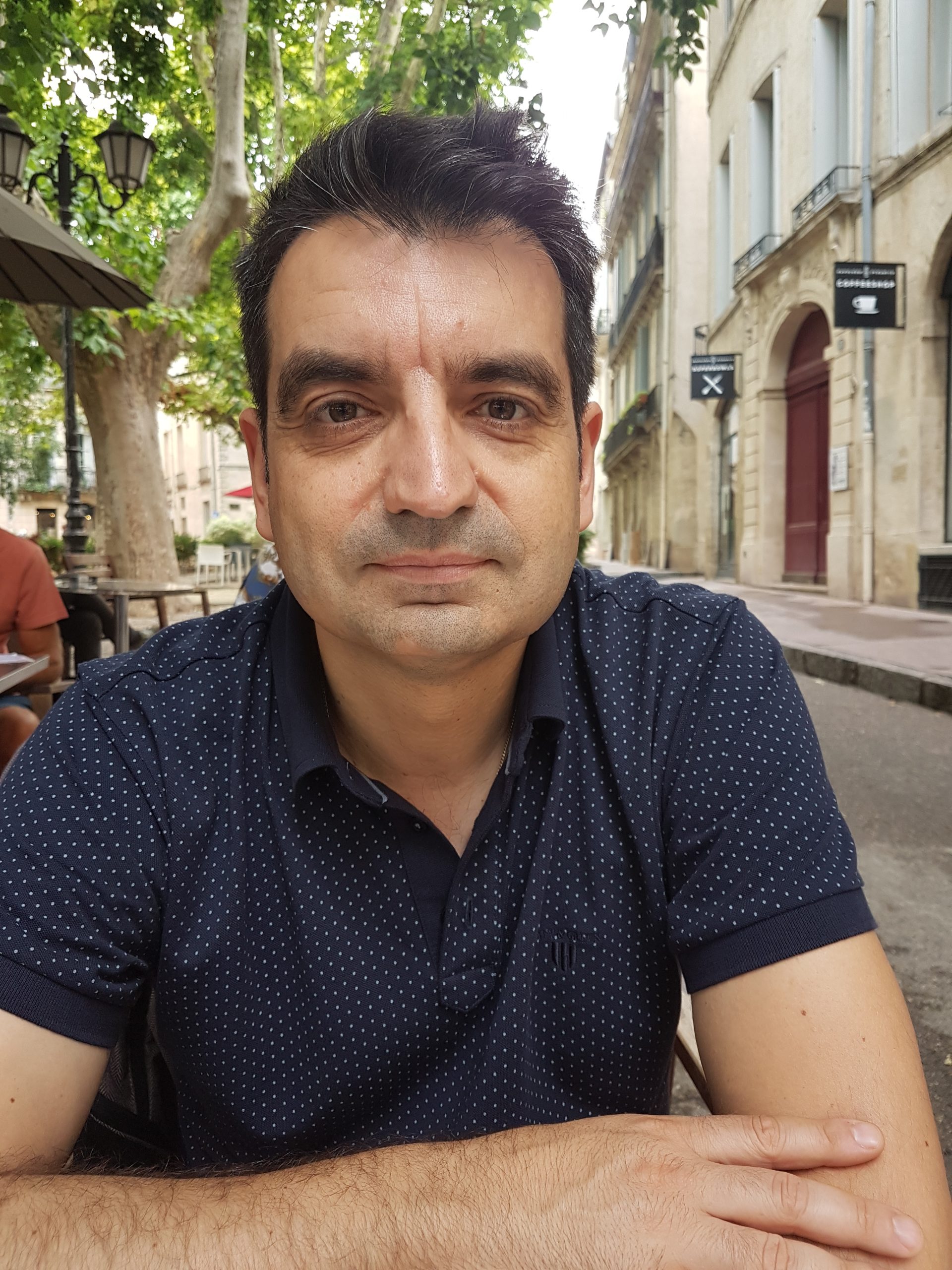
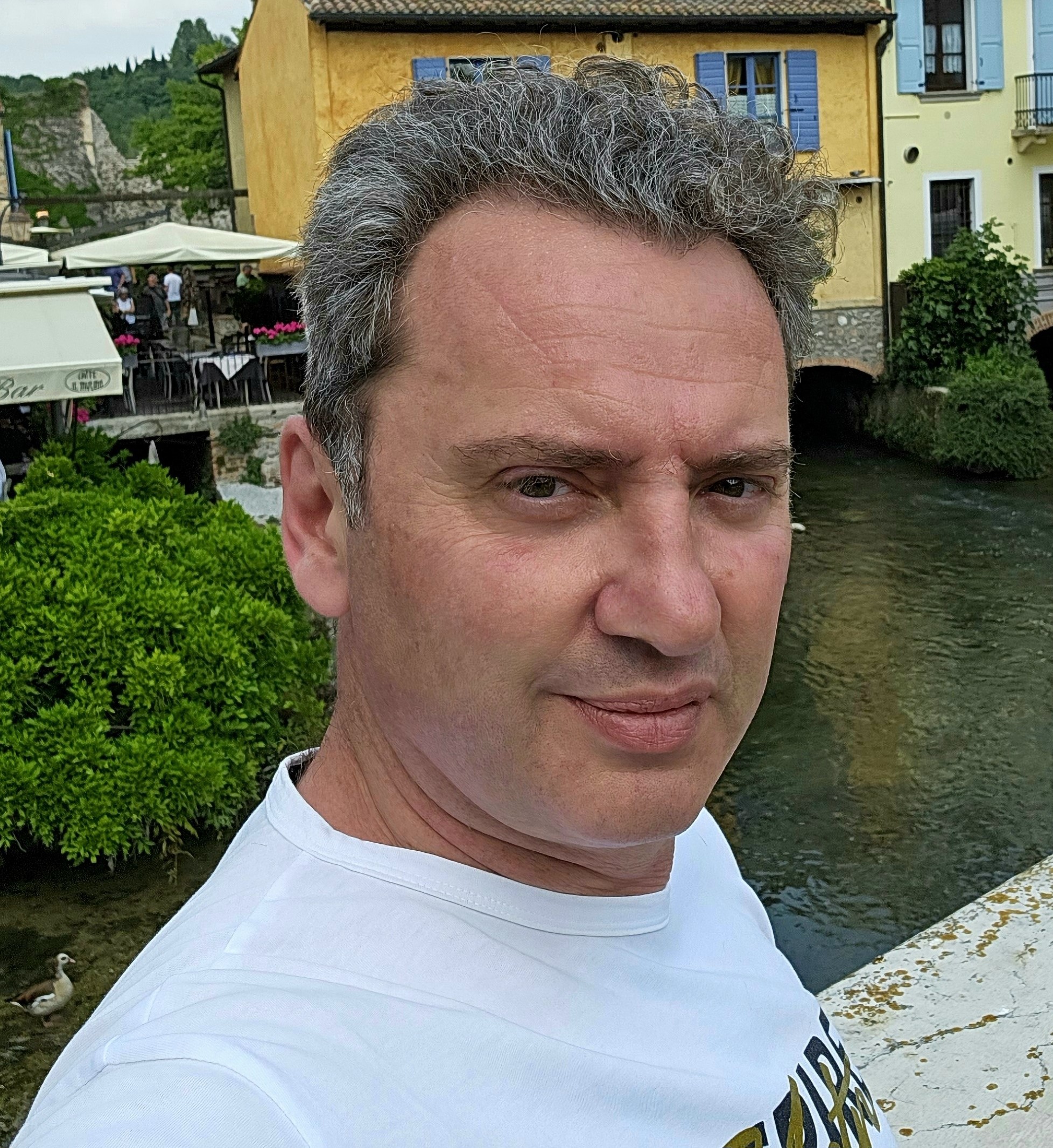
Mineralogy and Geology Laboratory
Director: Assoc. Prof. I. Papanikolaou
Tel.: +30 210 529 4151
E-mail: i.pap@aua.gr
Faculty

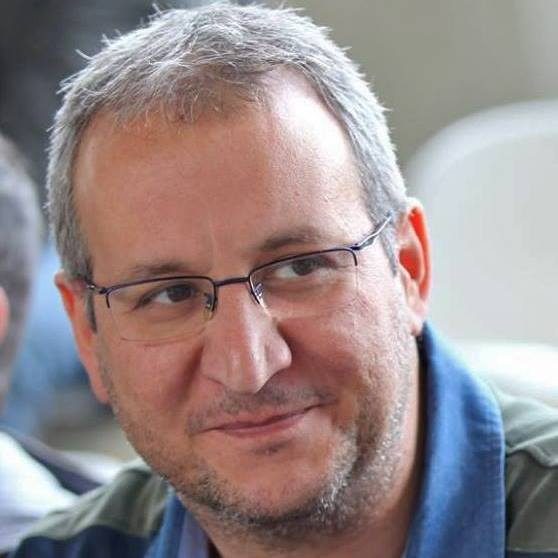
Research - Provision of Knowledge
The Mineralogy and Geology Laboratory belongs to the Sector of Geological Sciences of the Department of Natural Resources Development & Agricultural Engineering in the Agricultural University of Athens and was founded in 1920, shortly after the establishment of the Agricultural University. The Agricultural University of Athens is the third oldest University in Greece. For ninety years now, it covers a wide range of topics with emphasis in the sciences of the earth and the environment through basic and applied research. It is situated in a 25-hectare green campus that stretches on both sides of the historic Iera Odos (the Sacred Way of antiquity), close to the centre of Athens, at the heart of the ancient Olive Grove.
The Laboratory of Mineralogy and Geology belongs to the Faculty of Science in the Agricultural University of Athens and it is the sixth Laboratory that was founded by the beginning of operation of the Agricultural University of Athens (called then Supreme Agricultural School of Athens, 14/01/1920). Professors Georgalas, Voreadis, Paraskevaidis, Davi, Migiros and Stamatis were the previous directors of the Laboratory. At present, the laboratory is directed by Associate Professor I. Papanikolaou.
The laboratory is one of the best equipped laboratories in Greece, for studying the physical and mechanical properties of earth materials as well as the hydrogeological properties. It has all the necessary equipment, including scientific tools, PC and software.
The lab and its personnel draw upon a range of topics through an extensive research network that is broadly grouped in:
- Geology: Geotectonics, neotectonics, geomorphology, sedimentology, remote sensing, geographical information systems, land use, natural disasters, pollution.
- Mineralogy – Petrology: Mineral chemistry, petrography, geochemistry, industrial minerals and rocks.
- Hydro-Geology: Hydrochemistry, pollution, management and exploitation of subterranean water.
- Remote Sensing: Land Use fire and frost hazard mapping and other enviromental applications
Main Equipment
The Mineralogy – Geology laboratory was founded in 1920, one of the oldest in Greece, having its 100 year anniversary this year. It comprises the Section of Geological Sciences of the Department of Natural Resources Development and Agricultural Engineering of the School of Environment and Agricultural Engineering in the Agricultural University of Athens. It is divided in 4 internal Units: a) Hydro-geochemistry, b) Remote Sensing and Geological Mapping, c) Soil and Rock mechanics, d) Optical and electronic microscopy.
It is one of the best equipped laboratories in Greece, for environmental monitoring, for studying natural resources, hydrogeological properties as well as the physical and mechanical properties of earth materials. It has all the necessary equipment, including scientific tools, PC and software. Over the last decade, the Laboratory participated in more than 30 research projects, under private, national or EU funds. These projects include environmental and hydrogeological studies, water and soil quality inspections, rock mechanics, geotechnical properties and natural hazards assessment.
The Mineralogy – Geology laboratory is equipped with instruments that provide precise results for a wide range of major and trace elements, physical (e.g. pH, Eh, TDS, electrical conductivity) and biogeochemical (COD, BOD, TOC) parameters in water and soil analyses. It is also equipped with samplers for soil or waterbed sediments for hydrological and environmental studies. The available equipment is presented below:
- ICP-OES (Inductively Coupled Plasma Optical Emission Spectrometer), Perkin Elmer Optima 8000 (Year 2016). It is a dual-view (axial and radial) ICP-OES with full-wavelength-range CCD array detector, Flat Plate™ plasma technology and PlasmaCam™ viewing camera. It uses pure (99.999%) Argon gas to create the plasma, at temperatures that reach up to 10,000K, in order to produce excited ions and atoms that emit radiation at characteristic wavelengths for each element. The radiation is analyzed in the optical chamber, which is purged with pure (99.999%) nitrogen gas. It is a major tool for geoenvironmental monitoring applications since it can detect up to 74 trace elements (atom or ion state) in water, soil and bedrock. It offers detection limits in the ppb range and even lower for several elements. It has also several applications regarding the food industry such as the determination of metals in wine, arsenic in food and water, trace elements bound to proteins and the determination of nutrient levels in agricultural soils. This is important for calculating the amount of fertilizer required to maximize crop yield and quality.
- Electron Probe Micro-analyzer JEOL JXA 8900 Superprobe Electron Probe MicroAnalyser (EPMA) obtained with Stavros Niarchos Foundation funds is the only EPMA instrument in Greece. The EPMA involves bombarding of a specimen with a focused electron beam and analyzing the emitted x-rays. It generally combines two related analytical techniques energy-dispersive spectroscopy (EDS) and wavelength-dispersive spectroscopy (WDS). When combined together, EDS and WDS complement each other to produce a powerful analytical instrument. It is a microbeam instrument used primarily for the in situ non-destructive chemical analysis of minute solid samples. It is fundamentally the same as a Scanning Electron Microscope (SEM), with the added capability of chemical analysis. It reveals information such as the texture, chemical composition, and crystalline structure and orientation of materials. Its primary importance is the ability to acquire precise, quantitative elemental analyses at very small “spot” sizes (as little as 1-2 microns). It is capable to measure the abundance of all elements from Be to U using four automated wavelength-dispersive spectrometers (WSD) and an energy-dispersive spectrometer (EDS) for quick identification of the probed phase. With the combined help of EDS and WDS, and the high-resolution electron microscope, is capable of variable-scale element mapping of the solids. It is able to characterize a large variety of materials like minerals (e.g., clay minerals-zeolites), rocks (e.g., bentonite), synthetic inorganics (e.g., synthetic zeolites from fly ash), biogenic materials (e.g., diatoms) and others. The characterization includes the following specific topics: Texture characterization, Accurate, non-destructive –in-situ (micro-scale) – chemical analyses, X-Ray mapping for a variety of elements.
- Atomic Absorption Spectrometry (AAS (GBC/908AAS, year 1997) with a Graphite furnace extension. It offers a quantitative determination of chemical elements using the absorption of optical radiation (light) by free atoms in the gaseous state. The extension of the graphite furnace offers detection limits in the ppb range for most elements, whereas Interference problems are also minimized.
- Photoelectric flame photometer (INTECH/420, year 2010) is used in inorganic chemical analysis so as to determine the concentration of certain metal ions, such as Sodium (Na), potassium (K), Lithium (Li), and calcium (Ca).
- Spectrophotometer (HACH DR/3000, Year 1996). Microprocessor operated instrument, preprogrammed for most water management test requirements. It is a single-beam spectrometer and it uses a douple-pass grating monochromator capable of wavelengths from 325 to 1000 nm.
- Van Veen Grab 250 cm² (Year 2017). Sampler for collecting bottom sediments for biological, hydrological and environmental studies. It is made of AISI 316 stainless steel and the surface is electro polished. The grab itself is manufactured from 3 mm plate (250 cm²).
- Carbon Analyser Coulomat 702 SO/CS (Year 1998) inorganic Carbon analysis of solid samples. Determination of carbon (and sulphur) in metals, organic and inorganic solids. It is one of the main instruments for measuring carbon content in bituminous limestones and marbles.
- Chemical Oxygen Demand COD – BOD (Biochemical Oxygen Demand) (HACH-COD Reactor, year 2003), it provides a measure of organic removal by treatment processes.
- X-ray Diffractometer (XRD) Bruker D8 VENTURE (jointly with the laboratory of Physics, year 2015). Single Crystal X-ray Diffraction that includes also an extension for receiving powder. It is a tool used for identifying the atomic and molecular structure of a crystal. It is the principal method for determining the arrangement of atoms in minerals and metals and is used also for protein screening and crystallography purposes.
- Unmanned aerial vehicle (UAV) DJI Phantom 4 (year 2016). It offers full 360⁰ range, using a 12.4MP camera with a 1/2.3” CMOS sensor for advanced survey, mapping, and photogrammetry applications. It is a key instrument for natural hazards assessment and agricultural research. It can be used for plant counting and monitoring a variety of crops at every key growth stage, as well as for high resolution digital surface models (DSM) development. It is a major tool for studying flood and landslide risks, monitoring erosion and inspecting drainage and irrigation systems.
Laboratory of Agricultural Hydraulics
Director: Prof. I. Argyrokastritis
Tel.: +30 210 529 4077
E-mail: jarg@aua.gr
Establish 1920
Faculty
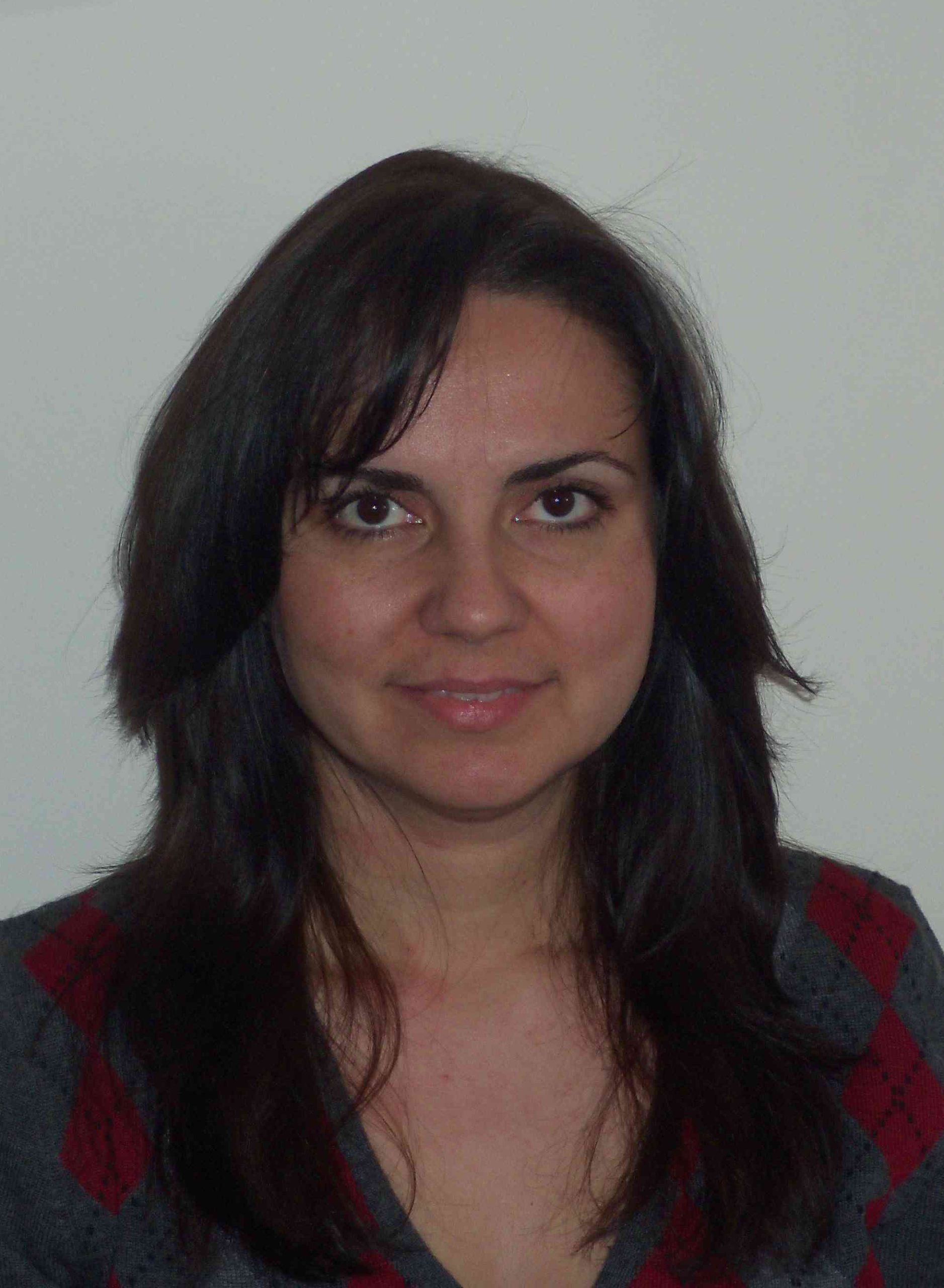


Research - Provision of Knowledge
The laboratory of agricultural hydraulics supplies the necessary knowledge and technologies to address problems related to the utilization of natural resources in general, and water resources in particular, their sustainability and simultaneous protection, as well as environmental engineering issues. In more detail the laboratory covers the areas of research and knowledge provision that include: soil physics, environmental hydrology, environment and climate, irrigation and drainage, land reclamation works and Irrigation engineering, fluid mechanics and applied hydraulics, bioclimatology-micrometeorology, surface hydrology and groundwater, water resources management, water treatment, reuse and recycling technologies, tackling erosion and desertification; the integrated management of river basins, flood and drought management, water quality assessments, water quality protection especially in islands and coastal aquifers, management of desalination systems, etc. The laboratory has special experience in the development of decision support systems (DSS), simulation models and optimization tools, expert systems, web-based systems for water and other natural resources and places special emphasis on the introduction of smart-water systems in agriculture and the related technology. Modern tools, such as geographic information Systems (GIS), and remote sensing, are used extensively. Since its founding in 1920, the laboratory of agricultural hydraulics is reaching 100 years of continuous experience in successful research and international collaborations in Europe, North America, Latin America, Asia and Africa and is among the first in the University. The Agricultural Hydraulics Laboratory has 7 Faculty members and 5 EDIP members. In the last five years, research projects funded by the European Union and national bodies of a total budget of more than four million EURO (€4 million) were implemented in the laboratory. The members of the laboratory have published a large number of scientific articles in prestigious international journals.
More specifically, the research and teaching of the agricultural hydraulics Laboratory focuses mainly on the following areas:
- Irrigation and drainage that focus on field research and laboratory studies on the basic processes of irrigated Agriculture, and drainage. In addition, irrigation scheduling and plant response, the irrigation with low-quality water (grey water) are also important research objects
- Soil Physics that deals with the movement of water and nutrients during the Irrigation and draining, mass and energy flows in the insatiable and congested territorial zone, the formation of profiles moisture, salts and other substances, the physical and hydraulic properties of the porous media etc.
- Bioclimatology-micrometeorology, which generally deals with the effects of the natural environment on living organisms. Although Hippocrates touched early on these issues in his Treatise on gases, water and places, the science of Bioclimatology has evolved into an important field in the recent decades with growing concern for the environment. It deals with the study of the influence of meteorological conditions and climate on plant growth, evapotranspiration, atmosphere-soil-plant relations, the effect of the microclimate on agriculture and the influence of the past and present climatic conditions for the growth and distribution of plants.
- Land reclamation works and irrigation engineering that refer to the design, analysis, modernization, use and management of reclamation projects (groundwater mining and water storage projects, transmission and distribution networks of irrigation water, open and closed conduits, drainage networks) and Design of irrigation systems in the farm system (surface systems, sprinkler systems and micro-irrigation systems).
- Water Resources Management that focuses on management and decision making for complex problems with the use information Technology (IT), decision support Systems (DSS), Smart water Systems, Web applications in management, expert systems, integrated management of river basins, management of floods and droughts, management of water resources infrastructure, transboundary water management, uncertainty and Risk analysis (Risk Management), and integrated assessment of hydrological, ecological and socio-economic impacts.
- Water Quality and Environmental Hydrology which deals particularly with the quality and movement of pollutants in surface (runoff, rivers, lakes, etc.) and groundwater (saturated and iunsaturated zone), and the protection of water quality especially in the islands and the coastal aquifers, There are fully equipped research laboratories for water quality analysis and.and water pollution monitoring.
- Hydrology. The surface hydrology: which includes the analysis and modelling of hydrological processes such as rainfall, runoff, evaporation, infiltration etc., the movement of water on the surface of morphological relief, as well as hydrological design for water storage projects and hydrological risk mitigation projects. Statistical hydrology is also an important research area. Finally, the groundwater study: which focuses on the flow in aquifers, analysis and modelling and monitoring of groundwater for their sustainable use (drillings boreholes, etc.).
- Hydraulics that develops the general principles of water flow, and includes the mechanics of fluids, the analysis of the flow of water in hydraulic structures (gates, spillways, pipes, channels etc.), methods of measuring supply, the flow open channels, flow in closed conduits – profiles of free surface in stable and non-stable flows,– analysis of pressure profiles, turbulent flowetc. Finally, with the design and study of hydraulic works such as dams, flood protection, etc.
Laboratory of Mathematics and Theoretical Mechanics
The laboratory of Mathematics is one of the oldest laboratories in the institution. Its foundation coincides with the foundation of the University (11 March 1920).
The Laboratory aims in educating the students of the Agricultural University of Athens in the fields of Mathematics and Statistics, as well as providing consulting to members of the University in various subjects related to Mathematics.
The mathematical areas covered by the Laboratory are:
Calculus, Linear Algebra, Differential Equations, Elementary Geometry, Applied Mathematics, Numerical Analysis, Computational Mathematics, Probability, Statistics.
The research interests of the members of Laboratory include: Mathematical Analysis, Geometry, Topology, Dynamical Systems, Computational Algebra, Computer Aided Geometric Design.
UNDERGRADUATE LEVEL
In the undergraduate level, The Laboratory offers a basic course in mathematics to freshmen of the University, which consists of Calculus and Linear Algebra. In addition, the following courses are offered to the students of the Department of Natural Resources Management & Agricultural Engineering: Differential Equations, Vector Calculus, Complex Analysis and Topics in Applied Mathematics.
GRADUATE LEVEL
The Laboratory participates in the graduate program of the Department of Natural Resources & Agricultural Engineering, as well as in the graduate program of the Department of Biotechnology offering courses on Ordinary and Partial Differential Equations.
Faculty
Laboratory of Soil Science & Agricultural Chemistry
Διευθυντής:: Καθ. Ι. Μάσσας
Τηλέφωνο: +30 210 529 4098
FAX: +30 210 529 4092
E-mail: massas@aua.gr
Έτος Ίδρυσης: 1920 (ΦΕΚ 30.20.1920)
- Θέση: Κτίριο Κουγέα 1ος Όροφος (Γραμματεία, Αίθουσα Χώρος Εργαστηρίου και Εργαστηριακών Ασκήσεων, Εργαστηριακός Εξοπλισμός, Βιβλιοθήκη, Γραφεία Καθηγητών, ΕΔΙΠ, ΕΤΕΠ, Αίθουσα Υποψηφίων Διδακτόρων),
- Κτίριο Διοίκησης Υπόγειο (στο πλαίσιο των δραστηριοτήτων του Εργαστηρίου λειτουργούν Μονάδα Γεωγραφικών Πληροφοριακών Συστημάτων και Μονάδα Κομποστοποίησης).
ΠΡΟΣΩΠΙΚΟ
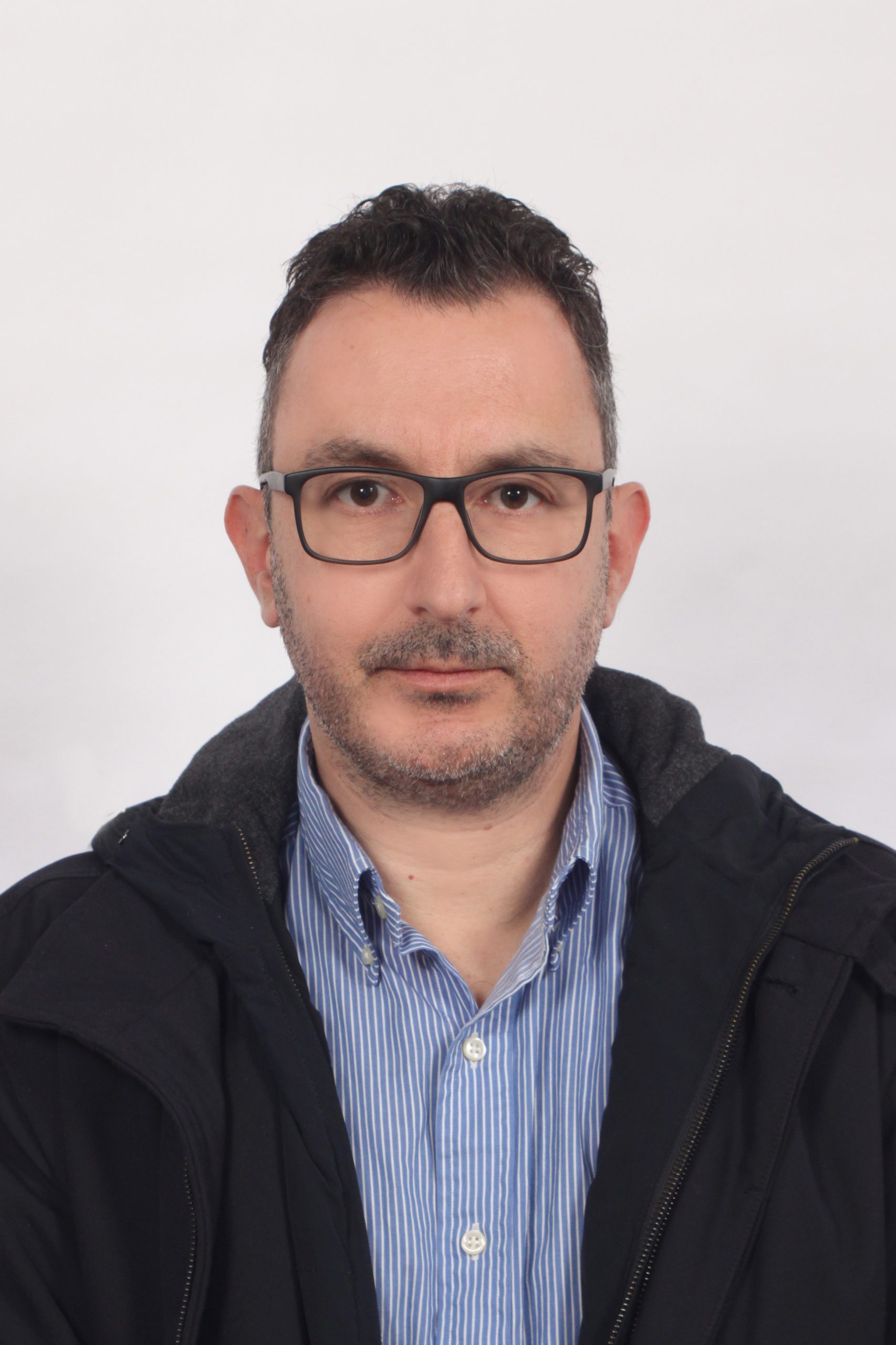

ΓΝΩΣΤΙΚΑ ΑΝΤΙΚΕΙΜΕΝΑ
Το Εργαστήριο Εδαφολογίας και Γεωργικής Χημείας καλύπτει τo γνωστικό αντικείμενο της έρευνας και παροχής γνώσης για τη βελτίωση και προστασία των εδαφικών πόρων, την ορθολογική χρήση τους και την αύξηση της παραγωγικότητάς τους. Ειδικότερα το Εργαστήριο ασχολείται με τα παρακάτω αντικείμενα:
- Χημεία και Φυσικοχημεία εδαφών (χημικές και φυσικές ιδιότητες, κολλοειδή συστήματα, φαινόμενα ανταλλαγής ιόντων, ορυκτολογική σύσταση των εδαφικών συστατικών κ.λπ.)
- Μορφολογικά χαρακτηριστικά εδαφικών συστημάτων, μικρομορφολογία εδαφών
- Γένεση, Ταξινόμηση εδαφών
- Χαρτογράφηση εδαφών. Εδαφολογικοί χάρτες. Εδαφολογικές μελέτες. Μελέτες ανάπτυξης εδαφικών πόρων και πόρων γης.
- Γονιμότητα εδαφών
- Αναλύσεις εδαφών και φυτικών ιστών και αξιολόγηση μεθοδολογιών και αποτελεσμάτων
- Αξιολόγηση αναγκών των φυτών σε θρεπτικά και ορθολογική εφαρμογή σχεδίων λίπανσης
- Βιολογία και μικροβιακή οικολογία εδαφών και ριζόσφαιρας. Αλληλεπιδράσεις φυτών-μικροοργανισμών στο έδαφος
- Όξινα, Αλατούχα, Αλκαλιωμένα εδάφη. Μέτρα προστασίας αυτών
- Συστήματα και μοντέλα αξιολόγησης εδαφών
- Εφαρμογές Γεωγραφικών πληροφοριακών συστημάτων και τηλεπισκόπησης στην εδαφολογία
- Υποβάθμιση εδαφικών συστημάτων (διάβρωση, ερημοποίηση) και σχεδιασμός χρήσεων γεωργικής γης.
- Ολοκληρωμένη διαχείριση εδαφικών πόρων
- Ποιότητα εδάφους και εδαφικές λειτουργίες που την καθορίζουν
- Δείκτες ποιότητας εδάφους
- Ρύπανση εδαφών – περιβαλλοντικές μελέτες
- Μαθηματικά πρότυπα περιγραφής της ρύπανσης
- Οικολογική και βιολογική σημασία της ρύπανσης των εδαφών
ΕΡΕΥΝΗΤΙΚΕΣ ΚΑΙ ΕΚΠΑΙΔΕΥΤΙΚΕΣ ΔΡΑΣΤΗΡΙΟΤΗΤΕΣ
- Γένεση – Ταξινόμηση εδαφών με έμφαση στη μελέτη του εδάφους σαν ανεξάρτητου φυσικού συστήματος, τη γένεση των εδαφών κάτω από Μεσογειακές κλιματολογικές συνθήκες, σε διαφορετικό μητρικό υλικό και τοπογραφικό ανάγλυφο, υπό την επίδραση διαφορετικών οργανισμών και χρόνου, συστήματα ταξινόμησης εδαφών για την ορθολογική διαχείριση τους.
- Χημεία – φυσικοχημεία εδαφών με έμφαση στην φυσικοχημική συμπεριφορά των αργίλων, τις αντιδράσεις επιφανείας των ανόργανων και οργανικών κολλοειδών, στους μηχανισμούς προσρόφησης–εκρόφησης θρεπτικών στοιχείων και οργανικών και ανόργανων ρύπων, την ανάλυση οργανικών υλικών, τις διεργασίες χουμοποίησης
- Εφαρμοσμένη εδαφολογία με έμφαση στη χαρτογράφηση και την αξιολόγηση των εδαφών, τη μελέτη των προβληματικών εδαφών (όξινα, αλατούχα, αλκαλιωμένα, αλατούχα-αλκαλιωμένα), τη χωρική ανάλυση εδαφολογικών δεδομένων και την κατανόηση της χωρικής κατανομής και της αλληλεξάρτησης κρίσιμων μεταβλητών που αφορούν στη διάβρωση, την αειφορική διαχείριση, την γονιμότητα και τη ρύπανση των εδαφών, την ερμηνεία εδαφολογικών μελετών για διάφορες χρήσεις γης
- Μικροβιολογία ριζόσφαιρας και εδαφικών οικοσυστημάτων με έμφαση στην απομόνωση, οικολογία και λειτουργία των δενδρόμορφων μυκορριζικών μυκήτων, μελέτη μυκήτων με επισχετική δράση κατά εδαφογενών φυτοπαθογόνων μυκήτων, και αξιοποίηση αυτών στη γεωργία, μελέτη των επιδράσεων γεωργικών πρακτικών στην δομή και λειτουργία των μικροβιακών κοινοτήτων
- Γονιμότητα εδαφών και θρέψη φυτών με έμφαση στη διαθεσιμότητα μακροθρεπτικών και μικροθρεπτικών στοιχείων στην ανακύκλωση και αποδόμηση των οργανικών υπολειμμάτων και αποβλήτων στα εδάφη, τους κύκλους C και Ν στα εδάφη, την ορθολογική εφαρμογή και την τεχνολογία των λιπάνσεων, την εδαφοανάλυση τη φυτοανάλυση και την αξιολόγηση των αποτελεσμάτων.
- Ρύπανση και αποκατάσταση εδαφών με έμφαση στη ρύπανση από βαρέα μέταλλα, τη γεωχημική συμπεριφορά των ρύπων και στις τεχνολογίες φυτο-αποκατάστασης ρυπασμένων εδαφών.
- Ερημοποίηση γαιών με έμφαση στη φύση του φαινομένου και τη σημασία της ερημοποίησης, τους παράγοντες και τις διεργασίες της ερημοποίησης, τον καθορισμό των περιβαλλοντικά ευαίσθητων περιοχών στην ερημοποίηση, τον καθορισμό των δεικτών ερημοποίησης, την εκτίμηση της ερημοποίησης της γης με διάφορα μοντέλα, την αντιμετώπιση των προβλημάτων που προκαλούνται από την υποβάθμιση των γαιών.
DEPARMENT DIVISIONS
LABORATORIES
Farm Machine Systems
Agricultural Chemistry


